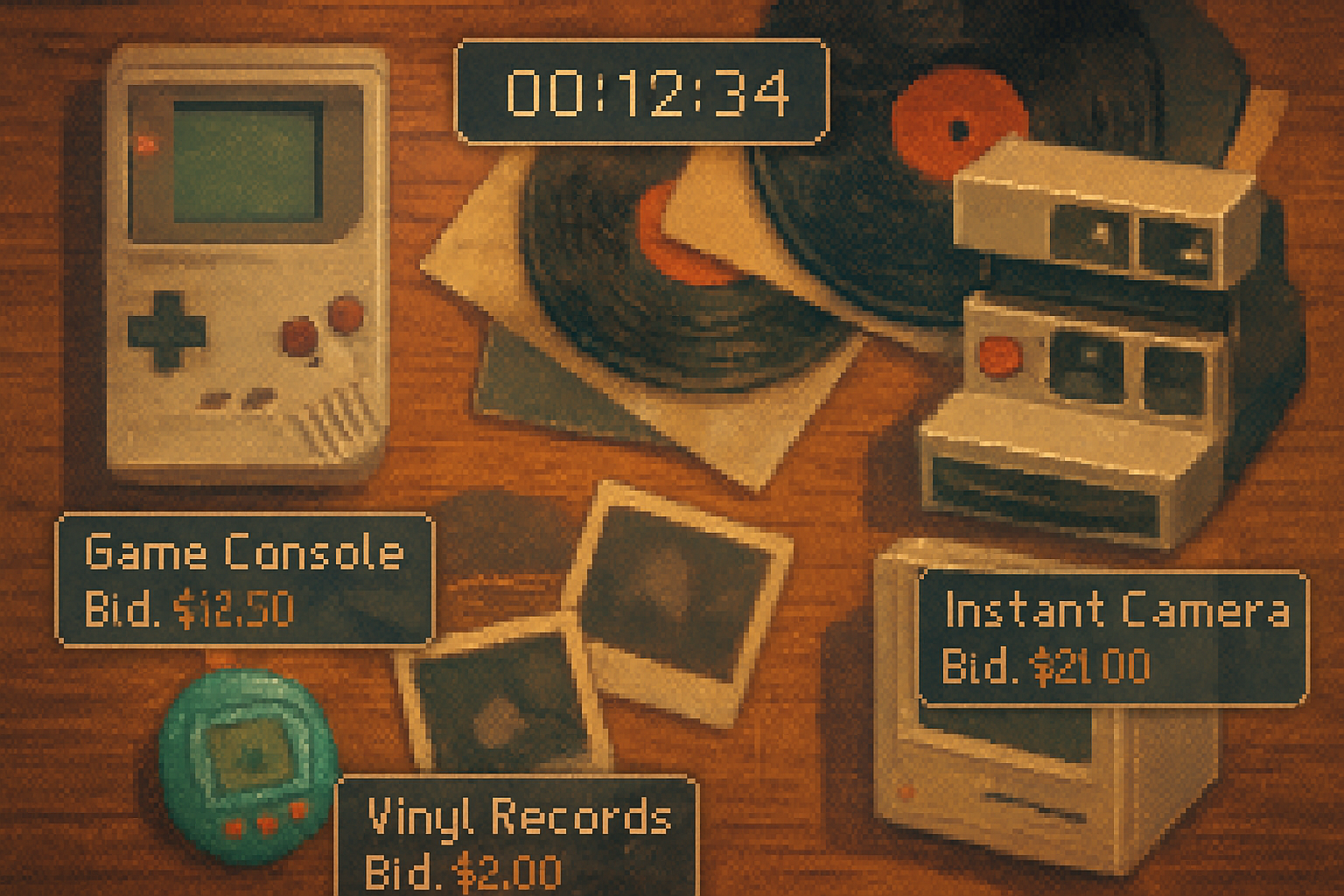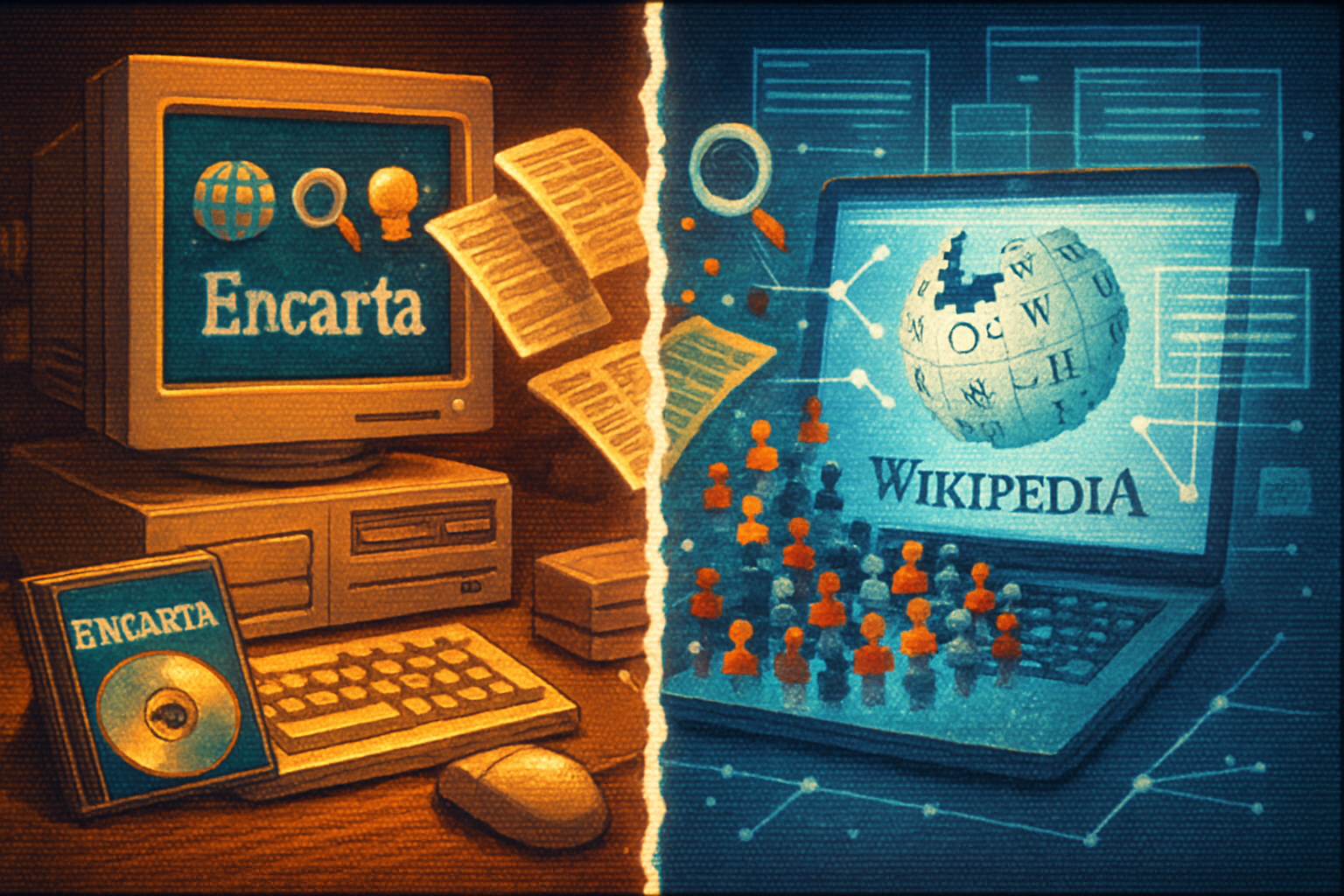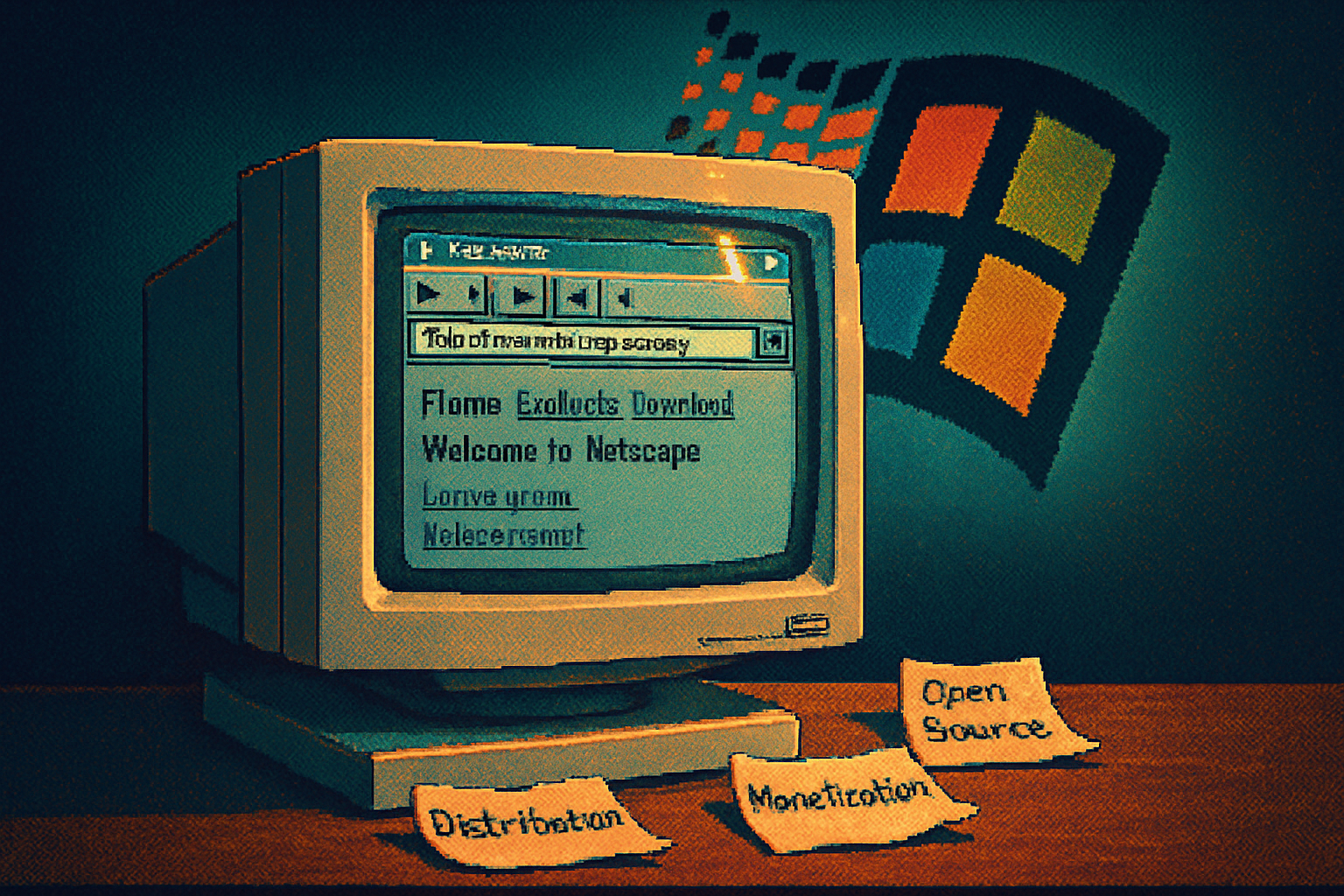· retrotech · 7 min read
The Evolution of eBay: From Auction-Bidding to Nostalgia Marketplace
How a 1990s auction site turned into the planet's attic - reshaping how we collect, preserve and speculate on things from our past.

I remember the first time I watched a 30-second auction clock on eBay tumble down to zero. A matte-gray brick of a Game Boy - chewed corners, sticker residue - sold for more than the same model cost new in 1991. The buyer celebrated like a small-time conquistador. Around them, strangers traded war stories in the comments: where they’d found spare buttons, which replacement screens actually work. The transaction was just a number on a page. The conversation was a shrine.
That split - cold digital commerce and warm, messy memory - is the secret of eBay’s evolution. What began as a quirky marketplace for used goods and oddities turned, over three decades, into the largest open-air museum for nostalgia, a place where childhoods are cataloged, authenticated, graded, and sold back to us.
From a garage auction to a global bazaar
eBay started in 1995 as AuctionWeb, the brainchild of Pierre Omidyar, who wrote the first code partly as a hobby project and partly to see what strangers would value. The site’s early charm was its unpredictability: obscure items attracted passionate, sometimes absurd bidding wars. The story of the first item - often recounted as a broken laser pointer sold to a collector - captures that early oddness. For details on the company’s early years, see its history overview on Wikipedia.
But the platform’s mechanics changed fast. Key pivots included:
- Introduction of fixed-price listings and “Buy It Now,” which let sellers move beyond auctions and buyers skip the wait.
- Integration of digital payments via PayPal, which eBay acquired in 2002 and later spun off in 2015. This shifted trust from handshakes and mail to secure online transactions.
- The rise of professional sellers and storefronts, turning hobbyists into small businesses.
Each change nudged eBay away from an anarchic auction site toward a structured marketplace - one that could scale, internationalize, and accommodate professional commerce. For an overview of these corporate milestones, see eBay’s company page and the PayPal timeline on Wikipedia.
Why nostalgia found a perfect home on eBay
Nostalgia is not just sentiment; it’s a marketable preference. The late 20th and early 21st centuries saw a simultaneous technological and cultural reversal: as new tech arrived faster, people developed a hunger to retrieve, restore, and relive objects from earlier eras.
eBay provided three conditions collectors always want:
- Reach - access to global sellers meant scarcity collapsed into discoverability. An otherwise rare item in rural Ohio could be listed by someone in Osaka.
- Information - photographs, condition notes, seller ratings, and community feedback helped buyers evaluate objects remotely.
- Tradability - standardized listings, shipping, and payment reduced friction between wanting and owning.
Combine that infrastructure with millions of users who grew up during the golden eras of vinyl, cartridges, and analog gadgets, and you have a platform designed for nostalgia.
Retro technology and the platform effect
Retro tech - think NES cartridges, original Game Boys, typewriters, Polaroids, and early Macintosh models - found a second life on eBay. Several dynamics are at play:
- Aggregation of supply - Items that were once dispersed across attics and garage sales suddenly appeared in one searchable index.
- Price discovery - Bidding created transparent, public price signals. You could watch a pattern emerge: mint-condition items rise in price; common, beat-up units stagnate.
- Condition grading and provenance - Sellers began to offer meticulous descriptions, high-resolution photos, serial numbers, and repair histories. Collectors use these cues like auklet calls - small signals that mean “authentic.”
This is not only commerce; it’s a form of cultural archiving. Hobbyists rescue functional artifacts, document them, and often publish restoration guides. The marketplace itself becomes a repository of tacit knowledge.
How eBay changed collectors - for better and worse
eBay rewired collecting in ways both liberating and corrosive.
What improved:
- Accessibility - New collectors who once depended on flea markets or specialized clubs can now find and learn about items from anywhere.
- Community formation - Listings and transactions build reputations. Feedback scores and store reviews create micro-institutions of trust.
- Preservation incentives - Market value encourages repair, refurbishment, and careful storage.
What got worse:
- Speculation and price spikes - Auctions attract speculators. When retro becomes profitable, prices inflate and emotional ownership becomes investment calculus.
- Loss of serendipity - The hunt used to be tactile and local; on eBay, the thrill of discovering a treasure at a yard sale is replaced by hitting “refresh” on a listing.
- Gatekeeping via condition and grading - High-grade items fetch irrational premiums. That premium creates a status ladder where only well-capitalized collectors can play at the top.
A concrete example: the vinyl resurgence. Once discarded in attics, records re-entered commerce (aided by nostalgia and warm analog myths). eBay listings helped collectors identify rare pressings and establish market prices - accelerating the comeback while also entrenching price differentials between mint and worn copies. NPR covered aspects of vinyl’s comeback and how markets influence taste.
The sociology of bidding: why people pay for memory
Collecting is not purely economic. Buying a childhood toy or a discontinued phone is an act of identity construction. It says: I remember. I belong. It is also a form of time travel: owning the object restores a tactile link to a former self.
eBay turns these private acts into public performances. Winning a bid signals dedication and good taste; losing a bid stokes loss aversion. The platform’s interface - countdown timers, public bid histories, and seller feedback - creates a small theater where reputation and nostalgia duel for dominance.
Market mechanics that shaped trends
Several platform-level mechanics nudged trends in retro tech and collecting:
- Search and sorting algorithms - Items surfaced by relevancy and recency often become viral lists, increasing demand for specific models.
- Featured listings and promoted listings - Paid exposure can transform obscure items into trending ones.
- International shipping and cross-border fees - Global demand skyrockets prices for certain national-culture items (e.g., region-specific toys or electronics).
These mechanics create feedback loops. An item that gets promoted, or that appears in a high-profile auction, can spark imitators and refocus the collector gaze.
The authenticity problem and eBay’s responses
As values rose, incentives for fraud increased. Fake boxes, doctored electronics, and relabeled serial numbers proliferated. In response, eBay invested in:
- Grading partnerships and authenticity guarantees for categories like watches and sneakers.
- Seller verification programs and stricter policies for high-value items.
- Enhanced dispute resolution and buyer protection programs.
Authentication is still imperfect. It’s a perpetual arms race between creative counterfeiters and platform safeguards. But every new verification layer adds a market friction that can also keep out casual sellers - a classic trade-off between trust and openness.
Cultural consequences: memory commodified
eBay’s rise accelerated a broader cultural shift: memory as commodity. Childhood artifacts became market signals - not merely personal relics but social currency. That commodification has ethical wrinkles:
- Scenes of dispossession - families selling heirlooms because they have market value, turning private memory into a public auction.
- Curatorial homogeneity - highly traded items get polished and photographed; the messier, idiosyncratic traces of life may be left behind.
- The nostalgia industry’s recyclability - manufacturers now design retro reissues to exploit the market - think mini consoles and vinyl reprints - which both gratify collectors and dilute originality.
Where eBay might go next - and why that matters
The nostalgia marketplace is not static. A few likely directions:
- More curated authenticity - expect deeper partnerships with experts, third-party graders, and blockchain-based provenance experiments.
- Vertical specialization - niche marketplaces might pull certain categories away from eBay for brand control (we already see this with dedicated vintage watch and sneaker platforms).
- AI-driven appraisal - computer vision can help judge condition, detect tampering, and estimate fair market value in real time.
The stakes? How societies remember. If marketplaces continue to structure what survives and what gets restored, they will be gatekeepers of cultural memory as much as commerce.
Final thought: what we lose when everything is for sale
eBay turned the world’s attics into a searchable ledger. That produced a glorious expansion of access - millions of items saved, repaired, and lovingly described. It also introduced new rhythms: the auction’s timer replaced the serendipitous find; the price tag reframed the heirloom as inventory.
This double-edged legacy is not a plaintive elegy. It’s a call. Platforms will continue to shape taste and memory. If we want to preserve the messy, accidental parts of culture - the things worth loving for reasons beyond price - we need to build marketplaces that honor context, provenance, and the stories behind objects, not just their final sale price.
References
- eBay - company history overview: https://en.wikipedia.org/wiki/EBay
- PayPal and eBay relationship: https://en.wikipedia.org/wiki/PayPal
- Nostalgia (concept and cultural effects): https://en.wikipedia.org/wiki/Nostalgia
- Vinyl comeback and market context: https://www.npr.org/sections/money/2019/09/29/764843106/why-vinyl-records-are-making-a-comeback



